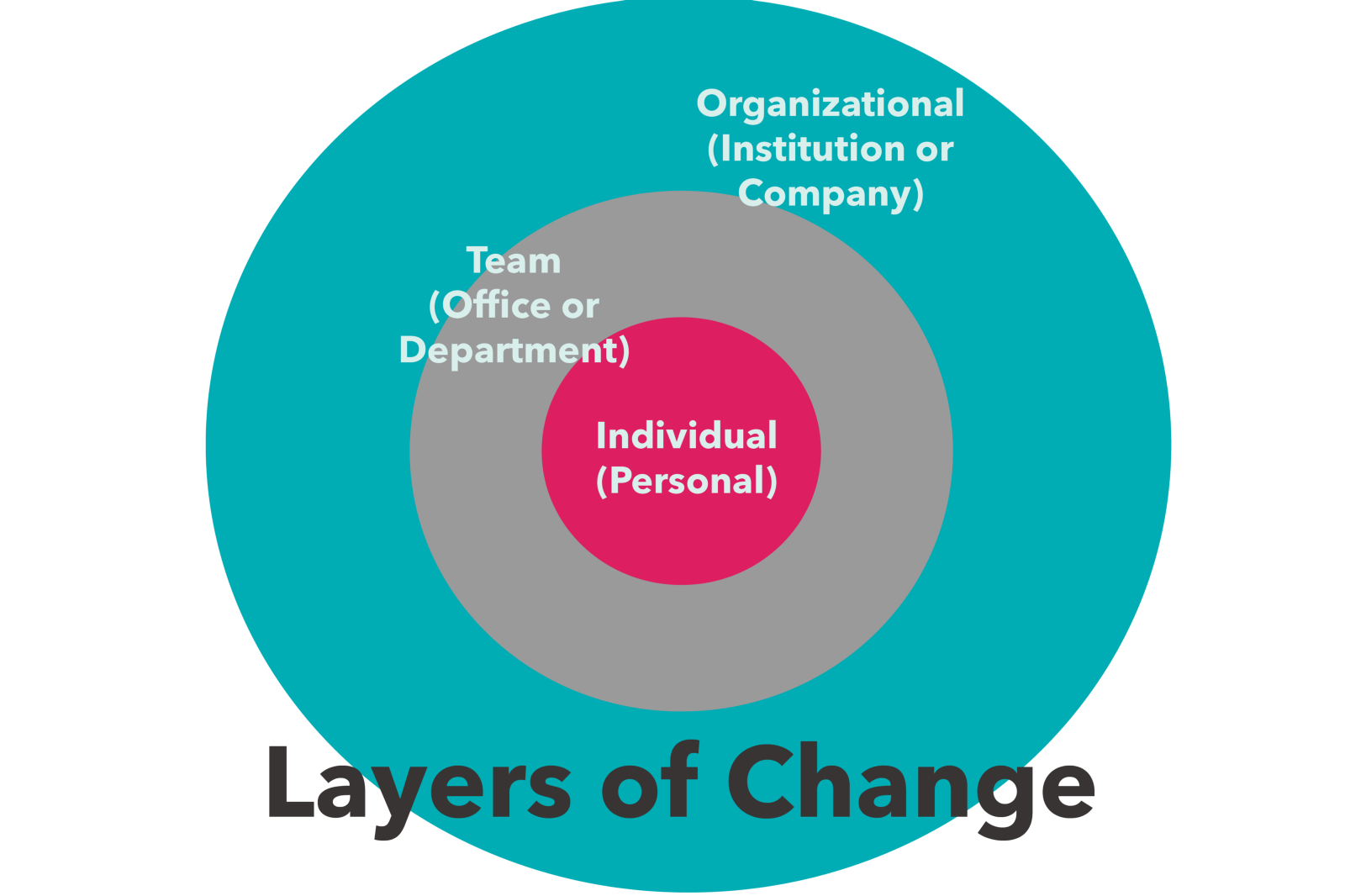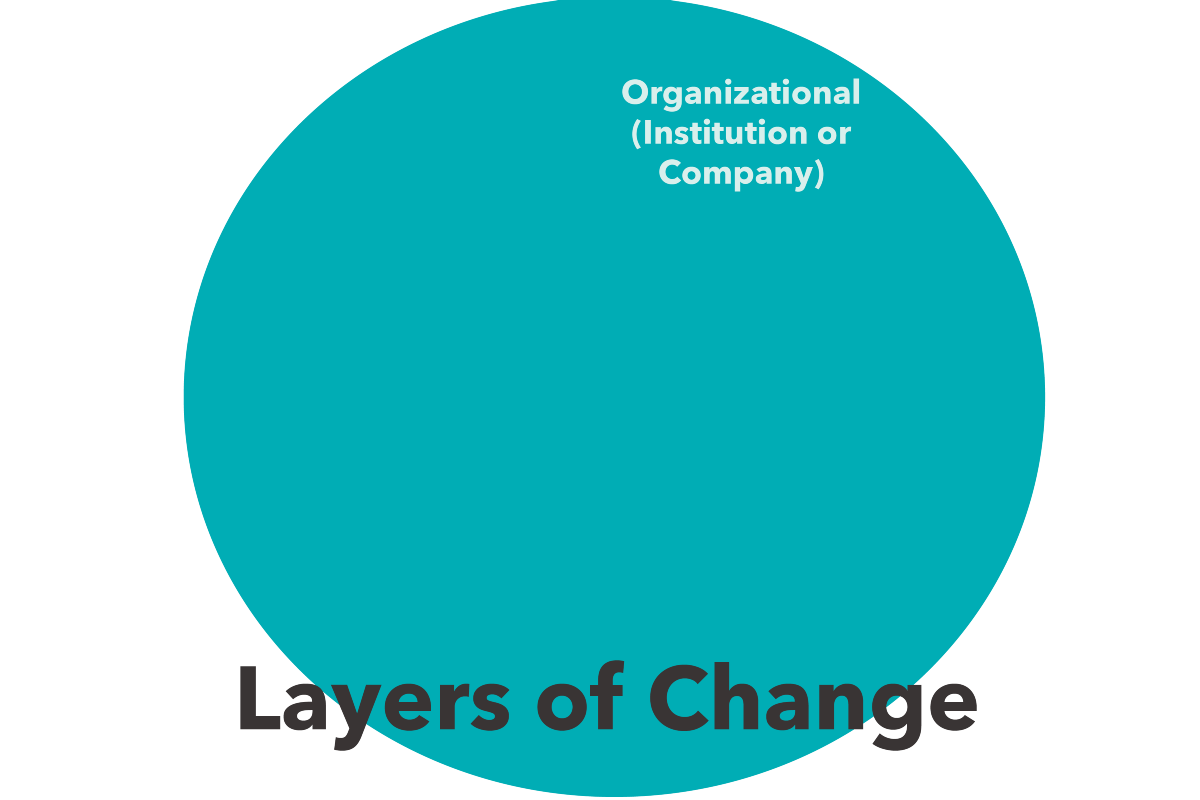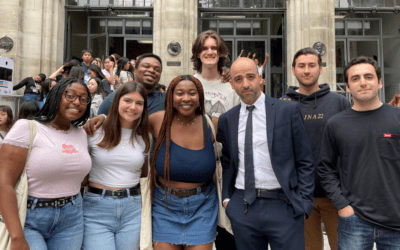What role will change management will play in the future of international education?
In her essay, ‘The Future of International Education’, Samantha Martin (Via TRM’s Founder & CEO) wrote ‘The future of international education is being driven by a growing appetite for innovation and change on the part of professionals who design and support programs, create new partnerships and policies, and adopt next generation technologies.’
It’s inevitable that higher education & travel are changing. Unarguably, the field of international education is going through huge changes as well.
We approach the topic by considering three layers to change: individual (personal), team (your office or department) and organizational (your institution or company). The assumption that we make is that when faced with change, is not if you will change, but rather how you will change.

A Theory of change: in business (Organizational)

Throughout our blog, we look to the business world (with their flexible budgets for risk-taking 🙂 and borrow tips and tricks for the field of international education. Our first theory of change is well known throughout the world of commerce.
Kaizen (改善), is the Japanese word for “continual improvement”. The Kaizen Theory is applied across industries, and large corporations such as G.E. have entire departments dedicated to continually improving their process and managing internal change. The concept is simple: all employees, at every level, should contribute to the necessary mindset of continually improving the process at hand.
What does Kaizen look like when it’s implemented? One example comes from a soap company who was receiving customer complaints because they were delivering empty soap boxes. The entire process for producing this soap was automated from start to finish. Executives at the company were discussing multiple approaches and new technologies to solve the problem at hand. A lower level employee interjected with the simple solution of keeping an industrial fan at the final stage before the boxes were moved to the loading area, and empty boxes were simply blown away.
What could it look like for higher education institutions to apply the Kaizen Theory to our institutions? The future of higher education in the U.S. is in limbo and there are ample opportunities to strengthen our institutions to prepare for the future.
How can we apply Kaizen directly to international education? Let’s take, for example, the process of applying for a study abroad program at your institution. Using Kaizen, you:
- Identify: You have received feedback from students that the application process for studying abroad is time-consuming and confusing.
- Plan: You and your team review the process and recognize that you ask many questions during the application process that you actually don’t need until AFTER a student has committed to going abroad. In an effort to increase applicants (and alumni) you decide to cut out unnecessary questions in the application.
- Execute: You implement the changes.
- Review: Find a few students who had completed the application BEFORE the changes were made, and after and survey them on their feedback.

Image via LeanKit
Theory of change: education (Team)

Since the 1960s, the theory of educators as facilitators of learning and change has been a guiding principle in both K-12 and higher education. In the U.S., Carl Rogers was a pioneer in the field of student-centered education through his work on the role of interpersonal relationships to facilitate learning. He wrote, “We cannot teach another person directly; we can only facilitate his learning”.
Rogers’ focus on the student-centered approach to education was a shift from educational approaches that often focused on process, as determined by teachers and administration, rather than starting first with the needs of the student, or learner.
He uncovered three distinct attitudes, described here, that facilitate learning and collaborative change at the “team” or classroom level.
- Realness in the facilitator of learning. The first characteristic of a successful facilitator is simple: realness of self. That is, in any classroom or group setting, the facilitator is much more likely to be effective if they do not put on a front but are able to bring their whole self, experiences and emotions into the exchange.
- Prizing, acceptance, trust. The necessary second attitude is to value, accept and inherently trust the learner. In order for a facilitator to succeed at setting the stage for group learning and collaboration, they must trust their co-collaborators to add value to the group.
- Empathic understanding. The final attitude and a core component of facilitation is the ability of the facilitator to express empathy and understanding towards learners.
The core of successful facilitation is to create environments ripe for engagement; environments that help people explore, learn and change.
Today, the process of facilitation plays a vital role in organizing people and moving groups forward. Fast Company writes, “It’s a process for getting groups of people together to solve any problem. Good facilitators know how to jump right in, establish an objective, create a format packed with interactive opportunities for discussion, and lead groups of all sizes toward constructive solutions.”
Instead of merely setting a meeting agenda, facilitation leaders excel at drawing upon the strengths of each individual in the room to solve the challenges at hand.

Facilitator 4-Step
Theory of change: cognitive sciences (Personal)

The growing world of cognitive science offers theories that help us better understand the human experience. One recent study published in the Journal of Trends in Cognitive Science builds a compelling case for the way mood can help individuals adapt to change.
The Huffington Post writes “The new theory — based on brain imaging data exploring the association between moods and monetary loss or gain — suggests that we learn from experiences that are colored by our moods. Therefore, moods are an efficient means of learning about the environment, and they help us to quickly adapt to change”. Dr. Eran Eldar a neuroscientist who studies emotion at University College London, one of the study’s authors, goes on to say, “Our moods reflect inferences that things are generally getting better or worse for us, and they impact our behavior so as to adapt to these changes”.
Not only does mood affect one’s ability to adapt to change, but recent studies have shown the influence of emotions on one’s ability to learn. This study is particularly relevant to our conversation on change in higher education, as any time there is a change — it will inevitably include a new learning opportunity.
Think of the last time that your institution instituted a new policy or procedure. What was the first step you took to make sure your bases were covered? Likely, you researched and learned what you could before considering how to apply it to your Area of Work. Research has shown that the emotional part of the brain, the limbic system has the ability to open up or shut off access to learning and memory. When under stress or anxiety, the brain blocks access to higher processing and stops forming new connections, making it difficult or impossible to learn.
Changes made at the organizational and team levels will inevitably affect us on a personal level.
Whether it’s at the organizational level through approaches such as Kaizen, at the team level through effective facilitation, or at the personal level through better understanding how emotions influence our will to change — there are ample opportunities for the field of international education to embrace change.
What does change management look like at your institution, in your office or in your personal life? Contribute to the conversation using #IntlEdChange




